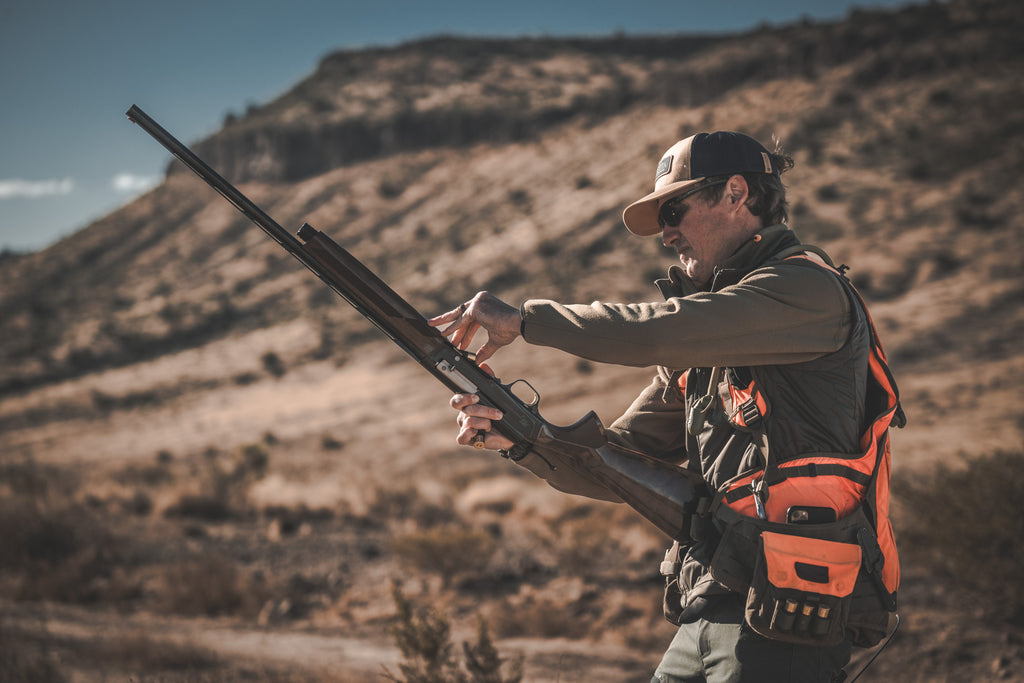Gas vs Inertia Semi Auto Shotguns

Ever wondered why that old Beretta seemed to recoil less than others? Or how your buddy’s favorite grouse gun stayed so clean? If you’re the type of guy who likes to stay on target and pull the trigger quickly, you’ve gotta know the pros and cons of both gas and inertia-driven semi-autos. So whether you’re planning on adding a new semi-auto to the collection or you’re just curious about how they stack up, we’ll break down all the features. And we’ll avoid getting lost in the trivial comparisons seen in other articles while maintaining a healthy dose of common sense.

First, let’s address the elephant in the room - is there a major difference in performance between gas and inertia guns? The short answer is no, though they each have strengths and weaknesses. You can find both cheaper and premium options for each type of shotgun - and prices between the two remain similar. But before we cover the specific pros and cons of each, let’s go over how each system operates.
How They Work
A gas-operated shotgun functions by using some of the propellant gases from each shot to push the bolt rearward, prior to a spring in the stock pushing the bolt forward to load the next shell as it’s lifted into the chamber. This is accomplished by using ports in the barrel, which allow some of the gases from each shot to escape to a piston inside the magazine tube. The piston then transfers that energy to a rod connected to the bolt, resulting in the action cycling for the next shot.
An inertia-driven shotgun uses the recoil from the shot to cycle the action, along with a similar spring in the stock to push the bolt forward and load the next shell. It does this by utilizing a spring within the bolt, which compresses rapidly during the shot but then pushes the bolt rearward as the recoil begins to slow down.
Both processes happen extremely fast so you’re able to keep shooting as quickly as you can get back on target. As mentioned already, each one is reliable as long as you’ve got a clean, quality shotgun. Let’s cover why you might pick one over the other.
Recoil
The biggest advantage of gas guns is the reduction in felt recoil. Since some of the gases are bled out and used to cycle the action, the recoil tends to feel like a slightly longer, gentler push. On the other hand, an inertia-driven gun uses the recoil itself to push the bolt rearward, delivering more energy to your shoulder. Additionally, inertia guns usually weigh a bit less (more on this later), further increasing felt recoil when compared to gas guns.
You’ll hear many shooters say the difference is so minimal it doesn’t matter, or they don’t notice when they’re shooting at an animal. For some people, there is some truth to that. But for small-framed shooters, magnum loads, high-volume shooting, or those of us who don’t want unnecessary punishment every time the trigger is pulled, this is certainly a point to consider.
Cleaning & Maintenance
Gas guns walk away with the win when it comes to recoil, but inertia guns reign supreme when it comes to staying clean. And it makes perfect sense - gas guns send a fair amount of carbon back into the gun itself to function correctly. This means more carbon buildup in places where an inertia-driven gun stays clean. With a gas-operated shotgun, you’ll have a little more cleaning work in the chamber, piston, and sometimes even the trigger assembly.
Specifically, it’s common for shooters to ignore or forget about cleaning the piston since it’s often out of sight and out of mind. Fortunately, they can take a lot of carbon buildup before you start to experience malfunctions. If you’ve ever neglected or forgotten about a piston after hundreds of shots, you know how the carbon seems to become baked on. For easy cleaning, your best bet is to soak the piston in BCS (this can get messy - use a parts tray and cleaning cloth) and then gently remove the carbon with a brush.

You’ll hear a lot of chatter about how many hundreds or thousands of shots a semi-auto can go through before it starts malfunctioning and “needs” to be cleaned. And though many inertia guns can go longer between cleanings and still function, who actually pushes those limits outside of satisfying their own curiosity?
The truth is shotguns that see the field need frequent attention, even if it’s just a quick spray and wipe with CLP. After exposure to humidity, rain, dust, snow, and more, a thorough cleaning to prevent rust and corrosion is a necessity. So while it may be true that a gas gun needs to be cleaned more often, it’s more applicable to say the cleaning process takes a few more minutes. After all, you’re typically fending off rust and corrosion as much as you are carbon buildup. A great strategy is to use CLP for fast, in-the-field cleaning to remove carbon and prevent rust while hitting areas of heavy carbon buildup with BCS.
Weight
We’ll keep this section short and sweet, but if you want a trim, lightweight shotgun, you’ll be looking for an inertia-driven model. A gas gun has more parts inside the magazine tube, which of course adds some bulk and weight. This might not be a big deal at the range, but If you’re covering miles in search of birds this can certainly tip the scale in favor of inertia guns. And with more hunters counting ounces, this has become a bigger factor in recent years.

On the other hand, a gun with a little more weight sometimes swings nicer, and of course, it further helps to recoil when shooting heavy loads. In the end, fit and feel are critical when it comes to a shotgun that becomes a lifelong partner - so unless you’re going for the lightest gun possible, your best bet is to handle a few of both to understand what feels right and points naturally for you.
Reliability & Versatility
Few things are more frustrating than taking a shot at a flushing bird, and then hearing the dreaded “click” before looking down and seeing the gun didn’t cycle. But as stated before, most quality gas and inertia guns will burn up the barrels without any malfunctions in normal conditions. So this section isn’t about reliability as much as it’s about addressing some of the advantages of each system…and for that, we have to dig into the details.
You’ll commonly hear about the consistency of inertia-driven guns in bad weather, wet environments, and dirty conditions. And it’s true that quality inertia guns are known for cycling shells no matter what. So if you commonly find yourself and your shotgun covered in ice and mud in sub-zero temps, an inertia gun might be the right choice.

Whether it’s a result of marketing from inertia-gun manufacturers or a few bad apples, gas guns sometimes get a bad rap about their performance in adverse conditions. With the increased carbon buildup, this can sometimes attract even more dirt, dust, and moisture to key parts. As a result, this can potentially affect performance.
But many hunters have taken gas guns to hell and back without so much as a single malfunction in some of the nastiest conditions chasing ducks and geese. Realistically, most shooters and hunters will rarely be in situations where the gun won’t function well due to conditions…especially when maintained properly. This is where maintenance is often overlooked and can make or break a hunt. Specifically, using an incorrect lubricant that doesn’t thin out properly can hold more dirt and grime, as well as slow the action. This is a key reason why our CLP was designed to leave an even, thin coat and reject static buildup instead of thickening and gumming up.
One advantage of a gas gun is their consistency cycling everything from light dove loads to heavy magnum shells. Since light loads produce less recoil i.e. energy to cycle the action, some inertia guns struggle to run these shells. And though you can switch the recoil spring to an aftermarket one specifically made for light loads, you might be better off just going with a gas gun from the start.
Additionally, if you’ve got a bad habit of pulling the trigger without the gun properly mounted against your shoulder, inertia guns are notorious for not ejecting and loading the next shell. This is because the gun itself doesn’t stop recoiling back when it’s time for the bolt to start moving rearward. It’s certainly no fault of the gun, but it's something to keep in mind. In a hunting situation, this sometimes occurs when trying to make a quick shot and having the stock snag on bulky clothing, which impedes proper gun mount.
While we’re on the topic of self-inflicted malfunctions, most inertia guns have one other possible downfall - misfires from the bolt coming out of battery. Essentially, this is when the bolt doesn’t fully lock up with the breech, so the hammer and firing pin do not function correctly to fire the gun. Again, this is usually self-inflicted - either the shooter closes the bolt too softly or they’ve jarred the gun and essentially bumped the bolt out of the correct position. While some inertia guns have been engineered to eliminate this possibility, it’s still something to keep in mind with many brands.
As you can see, there are pros and cons to each type of semi-auto shotgun…but trust that a reputable make and model of either kind will serve you well. Your best bet is to prioritize the advantages of each one and decide what matters most to you. And don’t overlook shotgun fit and feel - the gun that finds your shoulder with ease and points at what you’re looking at will drop the most birds. Better yet, have both gas and inertia guns in the safe. After all, who ever said they have too many firearms?
